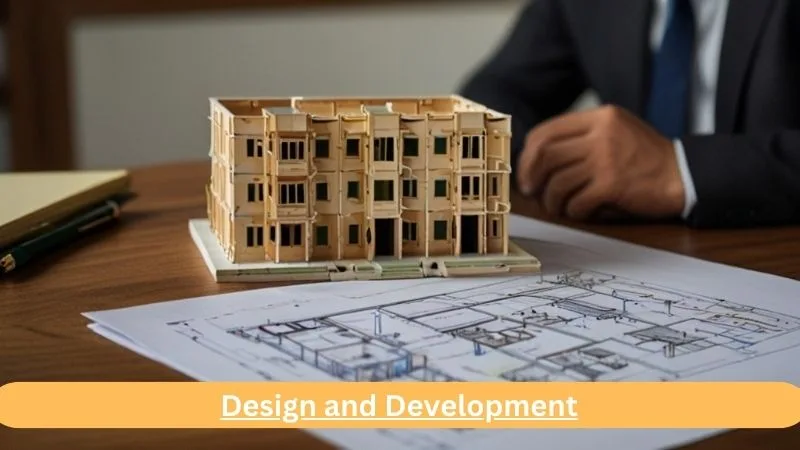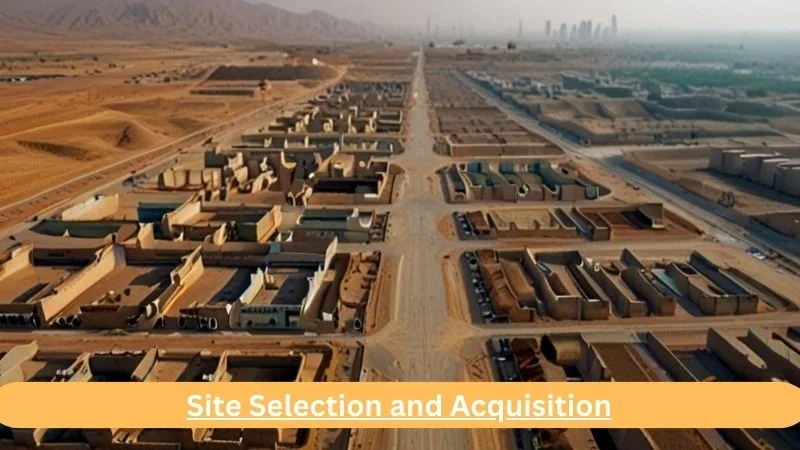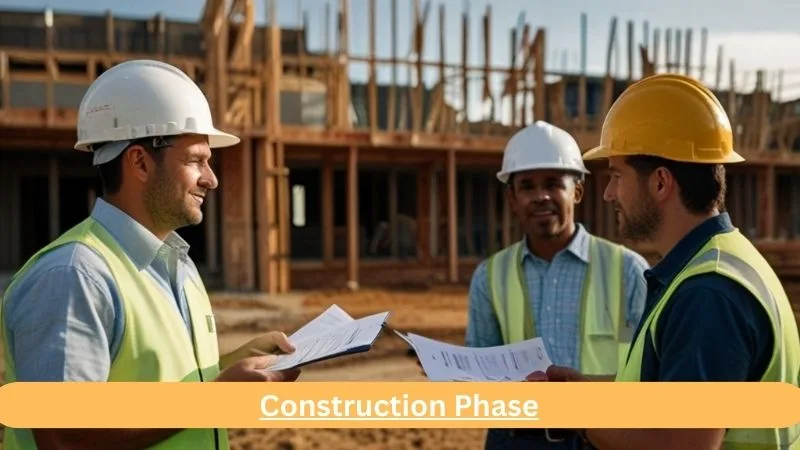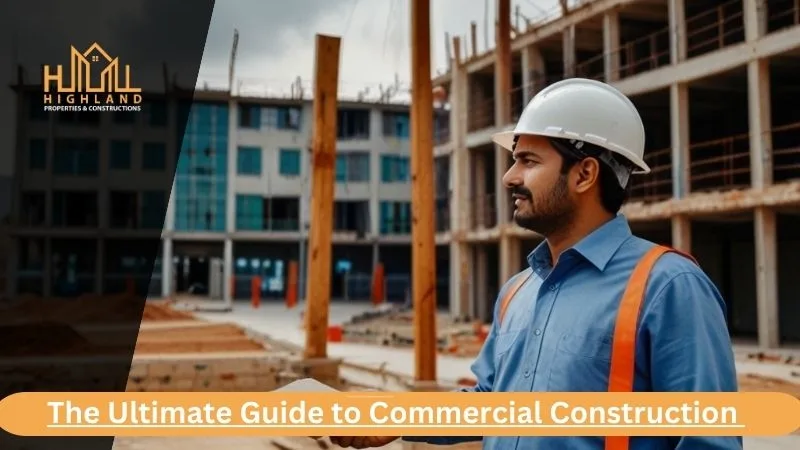The Ultimate Guide to Commercial Construction
Introduction:
Commercial Construction: The construction industry is a complex, multifaceted process that encompasses stages from initial planning and construction to project completion. This comprehensive guide makes it easier for everyone working on the project by providing detailed instructions on all critical stages of the industry.
Project Planning and Feasibility Study:
The foundation of successful business development begins with careful planning and feasibility studies. This phase includes determining project objectives, understanding customer needs, and evaluating the project’s economic, operational, and legal feasibility. It often includes location analysis, budget estimates, and timelines. Feasibility studies ensure that a project is financially viable and identify and mitigate potential risks at an early stage.
Design and Development:

When the project is deemed appropriate, the design and development phase begins. This includes architectural design, structural engineering, and detailed design and specifications [Commercial Construction]. Collaboration between architects, engineers, and clients is crucial to ensure the design meets project objectives and regulatory requirements. This stage also includes obtaining the necessary permits and approvals from local authorities.
Budgeting and Financing:
Establishing a detailed budget and financial stability are essential. This entails projecting all project-related expenses, such as materials, labor, permits, and conditions. Financial planning should account for unexpected costs and ensure funds are available throughout the project’s life. Getting financing often involves submitting a project plan to a bank or investor, which may include loans, investments, and grants.
Also Read: 5 Essential Steps for Building Your Dream House
Site Selection and Acquisition:

Choosing and buying the right location is an important decision when starting a business. Location, accessibility, and zoning laws are crucial considerations, as is environmental impact. The location chosen should be consistent with the project’s objectives and regulatory requirements [Commercial Construction]. This phase will include consultation, land survey, environmental assessment, and obtaining the necessary information.
Permits and Regulatory Compliance:
Guidance on different licensing and regulatory requirements is essential to avoid legal issues and delays. This includes obtaining building permits, environmental permits, and zoning regulations. One must comply with local, state, and federal laws and collaborate with regulatory bodies to guarantee all legal requirements are met.
Pre Construction Services:
Preliminary programs are necessary for planning and organizing construction activities. This includes site inspections, soil tests, and environmental evaluations to guarantee the property is appropriate for construction. Create detailed construction plans that include schedules, resource allocations, and safety procedures to establish a foundation for successful project execution.
Contractor Selection:
Selecting the ideal contractor is essential to the project’s accomplishment. The selection process involves a competitive evaluation by different operators, including factors such as experience, reputation, and price. A quality assessment process that includes reviewing previous work and reviewing documentation ensures that the selected contractor has the skills and resources to deliver the job on time and within budget.
Construction phase:

The construction phase is where the project begins. This phase involves executing construction plans, managing resources, and ensuring schedules and resources are met. Regular on-site inspections, good reviews, and good communication between teams and stakeholders are crucial to resolving pressing issues and making the project work.
Project Management:
Good project management is essential throughout the construction process. This involves coordinating multiple teams, managing schedules, and ensuring all activities comply with the project plan. Utilizing technologies and tools for project management can be efficient and help quickly identify and resolve issues by providing rapid updates on progress.
Safety and Compliance:
Security and compliance are the top priorities of the business world. This includes implementing safety procedures, training regularly, and ensuring that all employees comply with Occupational Safety and Health Administration (OSHA) standards. Regular safety inspections help maintain a safe workplace and prevent injuries.
Quality Control and Assurance:
High-quality management and safety standards are essential to delivering sustainable and functional buildings. This includes regular inspections, data testing, and ensuring construction complies with industry standards and specifications [Commercial Construction]. A good review process helps detect defects or problems early and fix them before the project is completed.
Sustainability and Green Building Practices:
Incorporating sustainability and green building practices into commercial buildings is becoming increasingly important. This involves, among other things, using eco-friendly materials, energy efficiency, and low environmental impact. Demonstrate your commitment to sustainability by applying for qualifications like the LEED (Leadership in the Design of Energy and Environment) accreditation. Sustainable buildings are suitable for the environment and can result in long-term savings by lowering energy usage and maintenance costs.
Technology Integration:
Integrating the latest technology into the construction and final building can be efficient and effective. During construction, technologies such as Building Information Modeling (BIM) can improve planning, visualization, and team collaboration. For successful buildings, intelligent lighting systems, HVAC, security, and building management can increase efficiency and occupant comfort. Adopting these technologies and incorporating them into projects can provide a competitive advantage.
Post-Construction Services and Maintenance:
Once completed and delivered, post-construction services and regular maintenance are essential to ensure the building remains operational and functional. This involves periodically monitoring, reviewing, and resolving issues that arise. Establishing a relationship with a reliable contractor can help you extend the life of your home and preserve its value. Additionally, post-occupancy evaluations can provide feedback on home performance and help plan future improvements.
Project Closeout and Handover:
The final phase of the workplace construction is project closing and handover. This includes final inspections, resolving product identification issues, and ensuring all systems work correctly. Provide the customer with necessary information, including drawings and worksheets. The correct delivery method ensures that the customer is satisfied with the final product and that all contracts are fulfilled.
Conclusion:
In short, a successful business requires careful planning, good management, and tight management at all levels [Commercial Construction]. By following these general guidelines, stakeholders can explore the intricacies of business development and make plans successful by achieving all goals and objectives with the rule of law.
Commercial Construction – FAQs:
Q1. What is the purpose of commercial houses?
Ans: Commercial construction involves buildings and facilities for commercial purposes, especially shops, offices, and factories. Workplaces can range from remote warehouses to high-rise office buildings in the city center.
Q2. What is the scope of commercial architecture?
Ans: Commercial buildings: There are many types, including offices, hospitals, government buildings, and stores. These are also often used in combination, and the architect you seek must know to help you with your unique home needs.
Q3. What is the role of architects in business projects?
Ans: Commercial Architects are crucial in answering work groups’ questions, presenting details, and reviewing plans. Their role is to ensure that the construction aligns perfectly with the client’s needs, providing a secure path to realizing their vision.





Leave a Reply